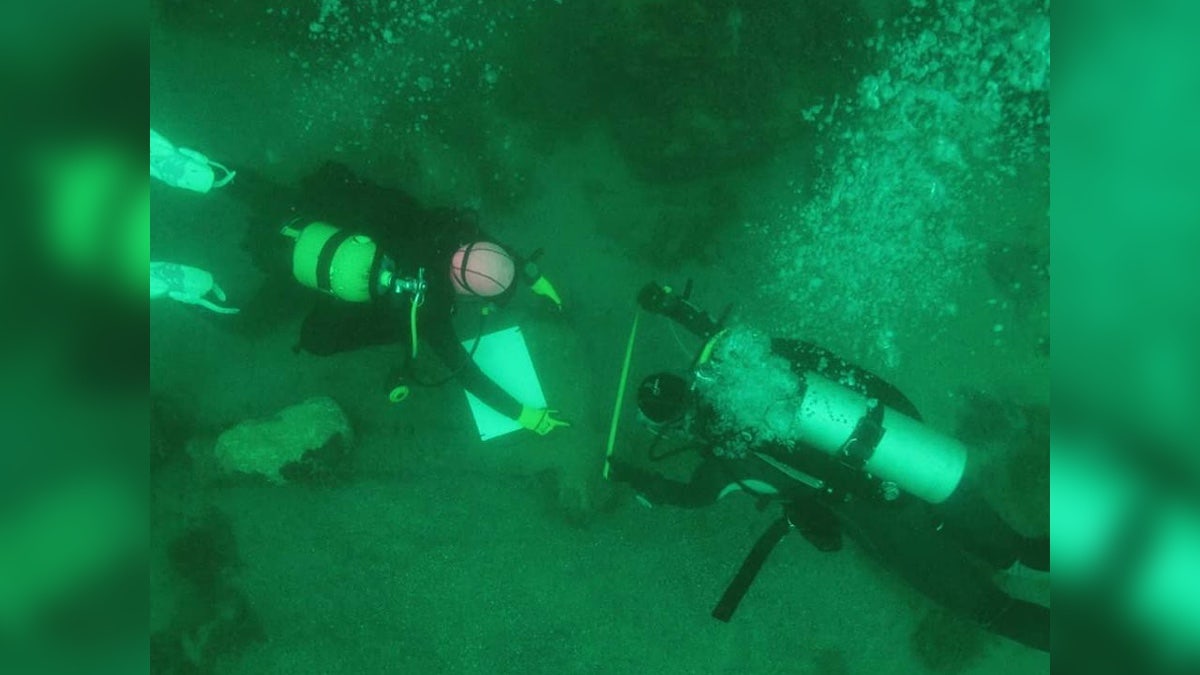
The Polish team spent a month working with Guatemalan archaeologists at Lake Petén Itzá. (Petzen Itza Project)
A team of Polish archaeologists diving in a possibly sacred lake in northern Guatemala has recovered hundreds of Maya artifacts, including ceremonial bowls and obsidian blades that may have been used in ancient animal sacrifices.
Scientists in Guatemala are examining the artifacts to learn more about the material culture of the Maya at different times. Researchers also want to learn how the objects may relate to Mayan religious practices.
The researchers recovered more than 800 artifacts from Lake Petén Itzá, which once surrounded the ancient Maya city of Nojpetén, according to the team leader, Magdalena Krzemień, an archaeologist at Jagiellonian University in Poland.
The island that was once the site of the ancient Maya city, linked by a causeway to the shore, is now the site of the modern town of Flores in Guatemala's northernmost province of Petén — a landlocked region famous for its rugged mountains and jungles.
More From LiveScience
Sacrificial finds
Many of the artifacts found in the lake were small pieces of ceramic, with a few dating to the Maya proto-classic period — between 150 B.C. and A.D. 250 — while most dated to the Maya post-classic period, from A.D. 1000 to A.D. 1697.
Krzemień said the largest objects found in the lake included three ceramic bowls, one inside the other, and an obsidian knife blade. This was similar to those used in ancient rituals, suggesting it could have been used for human or animal sacrifices, she said.
Small animal bones were found inside some of the bowls, which may indicate that the vessels were used for sacrifices, Krzemień said. However, it's also possible that some small animals entered and died there later, she said.
The lake surrounding the ancient city of Nojpetén likely played an important part in ancient Maya rituals.
"Water had very special and symbolic meaning in ancient Mayans beliefs," Krzemień said. "It was thought to be the medium [or] door to the underground world, [the] world of death," where the gods lived, she said.
As a result of these beliefs, the ancient Maya sacrificed animals and sometimes humans to their gods in lakes and in flooded limestone sinkholes known as cenotes, which are common in the region.
Krzemień said that the latest expedition did not establish that the whole of Lake Petén Itzá was a holy place, but some of the ritual objects they found in place underwater showed that at least part of the lake was considered "sacred" by the people who lived there.
Maya lake
The ancient city of Nojpetén was a center of Maya civilization in pre-Columbian Mesoamerica — a civilization that extended across modern southeast Mexico, Guatemala, Belize, and parts of Honduras and El Salvador. Among the most famous Maya archaeological sites is the ancient city of Chichen Itza, in the Yucatán Peninsula of modern Mexico.
The Maya made advances — including an intricate astronomical calendar and the culture's distinctive pictorial writing — in a civilization that lasted more than 2,000 years before the arrival of Europeans in the Americas. Maya culture also influenced other Mesoamerican civilizations, such as the Aztec culture of central Mexico.
The six-member Polish diving team of the recent study included archaeologists from Jagiellonian University in Krakow, Nicolaus Copernicus University in Toruń and the University of Warsaw. The researchers spent a month at the lake in August and September last year, taking a total of about 90 dives at various depths.
The diving team worked with six archaeologists from Guatemala, led by Bernard Hermes, and with two Polish divers who had sponsored the expedition, Sebastian Lambert and Iga Snopek. Krzemień, a doctoral student, is now studying Maya archaeology during an international exchange with a Mexican university. She said the Polish and Guatemalan archaeologists plan to reunite for one month a year to further explore Lake Petén Itzá underwater. They are already planning their next expedition for August.
Original article on Live Science.




















